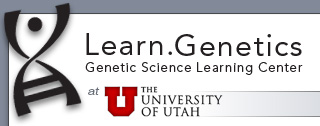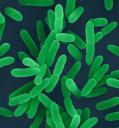I just wanted to let my readers know that posting will be on the light side this week because of exams.  I am finishing up my first year of law school, so Constitutional law and Property are taking up most of my time. And stay tuned, I have some big projects in the works for the very near future!
Uncategorized
Learn More About DNA and Genetic Genealogy at Roots Television
Last week I posted Ten Videos for Genetic Genealogists, a collection of YouTube and other videos that might be of use to people who are just starting out in the field of genetic genealogy (and hopefully many others!). Youtube is great to watch educational videos, it is also has lots of other uses such as songs for babies, cooking tutorials, and travelling tips. Youtube has good quality and a lot of information…
Another valuable (and ever-growing) resource for genetic genealogists (indeed, for ALL genealogists, is Roots TelevisionTM. Roots Television is an online media presentation website created by historian Megan Smolenyak Smolenyak and media producer Marcy Brown. The site offers a wide variety of programming on such topics as genetic genealogy, Irish roots, and African roots, as well as recordings of presentations by some of the world’s leading genealogists (to name only a few).
DNA Day
 I was unaware that today is actually DNA day. Learn more here.
I was unaware that today is actually DNA day. Learn more here.
“National DNA Day is a unique day where students, teachers and the public can learn more about genetics and genomics! It was created to commemorate the completion of the Human Genome Project in April 2003, and the discovery of DNA’s double helix.
Students and teachers nationwide can celebrate DNA Day and learn more about genetics and genomics through the National DNA Day activities available on these pages. NHGRI offers an online chatroom, a library of webcasts featuring genomic researchers, interactive teaching tools and an opportunity through our Ambassador program to invite a real-life genomic researcher to talk to your students.”
African American Lives 2
Yesterday the producers of last year’s popular PBS series “African American Lives†and “Oprah’s Roots†announced that they are seeking applications from people who are interested in participating in “African American Lives 2.â€The producers plan to air the program in February 2008, and it will once again be hosted by Henry Louis Gates Jr.One lucky participant will have their genealogy mapped through a combination of traditional genealogical research and DNA analysis.You can read the full press release here.
Note that applications must be submitted by submitted by 6:00 PM on Friday, May 4, so if you believe that you have “discernible (or at least anecdotal) African ancestryâ€, as the FAQ section states, you should apply immediately.This type of dedicated research is undoubtedly worth thousands of dollars and could be an amazing opportunity.
“Do It Yourself Genetic Research” at the Learn.Genetics Website
 I recently profiled the website DnaTube which hosts videos and animations that explain various facets of genetics and DNA.Another source of valuable information is the Learn.Genetics website hosted by the Genetic Science Learning Center at the University of Utah.
I recently profiled the website DnaTube which hosts videos and animations that explain various facets of genetics and DNA.Another source of valuable information is the Learn.Genetics website hosted by the Genetic Science Learning Center at the University of Utah.
According to the website:
“The Genetic Science Learning Center is an outreach education program located in the midst of bioscience research at the University of Utah. Our mission is to help people understand how genetics affects their lives and society.Our educational resources provide accurate and unbiased information about topics in genetics and bioscience. Designed for non-research audiences, our materials are interactive and jargon-free, target multiple learning styles, and often convey concepts through visual elements.“
Who Owns Your DNA?
An article in today’s New York Times, “Stalking Strangers’ DNA to Fill in the Family Tree” by Amy Harmon, looks at the extremes that some genetic genealogists have gone to to ‘obtain’ DNA from other people for analysis. The genetic genealogists in the article have stalked potential relatives and one keeps a DNA kit in his fridge awaiting his uncooperative father’s demise.
I recently asked my father’s first cousin to take a DNA test since he possessed the only surviving mtDNA from my great-grandmother, and orphan. The two lines had connected in 30 or 40 years, but once I made contact he was very interested in taking the test. The results provided the only clues I have regarding my great-grandmother’s ancestry. If that source had been unwilling to participate, I own some letters that my great-grandmother had written and I could have analyzed the DNA from the envelopes. I do understand the desire to analyze someone else’s DNA, but stalking people and waiting for them to die seems a bit extreme.
Learning More About DNA and Genetics at DnaTube
I just happened across a new site called DnaTube.com Scientific Video Site. According to the website:
“DnaTube is a scientific research site providing video based studies, lecturers and seminars. Our goal is to contribute science by generating self-growing community who shares their scientific experiences. Most of DnaTube members are graduate students from universities of all countries.”
There’s a very brief introduction to DNA, genes, and inheritence. Even better, I watched a FASCINATING video showing the 3D structure of a mitochondria. For anyone who’s purchased a mtDNA genealogy test, this is a great video to understand more about mitochondria. I also watched a very cool video about red blood cells.
It looks as thought DnaTube is just starting, so check back often to see what’s new and interesting.
Are you immune to HIV and smallpox?
 The CCR5 gene encodes a chemokine receptor (a long name for a protein that sits in the walls of our cells).When the body has been invaded by a pathogen such as a cold virus, CCR5 plays an important role in fighting that virus.Smart viruses such as HIV-1, however, hijack the CCR5 protein and use it to sneak into CD4+ T cells & macrophages.
The CCR5 gene encodes a chemokine receptor (a long name for a protein that sits in the walls of our cells).When the body has been invaded by a pathogen such as a cold virus, CCR5 plays an important role in fighting that virus.Smart viruses such as HIV-1, however, hijack the CCR5 protein and use it to sneak into CD4+ T cells & macrophages.
In some populations the CCR5 gene has experienced a mutation that deleted 32 basepairs in the gene sequence.The mutation prevents the expression of the protein on the cell surface.As a result, people with this mutation show some degree of protection from certain viruses.In fact, homozygosity of the CCR5-D32 allele (meaning BOTH copies of the gene are mutated) leads to “nearly complete resistance to HIV-1 infection.”People with only 1 copy are as much as 70% resistant! Surprisingly, homozygotes do not show any other problems as a result of the mutation.
Discovering My Maternal Roots
My first foray into genetic genealogy took place in 2003 when I ordered the mtDNAPlus (which sequences both HVR1 and HVR2) from Family Tree DNA.
Like so many other genealogists, I had been unable to trace my maternal line as far as I would have hoped.My most distant ancestor, Sarah L. Bodden, was born in 1846 in the Cayman Islands and had died in 1914 in Honduras.No one knew anything about Sarah’s parents or her life, and given the location and the difficulty of research I felt that this line had little prospect of development.It was a perfect opportunity to employ genetics.
Inside (almost) every one of my 50 trillion cells (that’s 50,000,000,000,000!!!) there is a tiny circle of DNA that has been given to me, most likely unchanged, in a direct line from Sarah through 125 years, 5 generations, and across 1750 miles.By sequencing a small part of the DNA I could identify from which branch of the “maternal family tree†Sarah descended.Based on the information I had managed to put together, I predicted that Sarah was a descendant of English immigrants who settled the Cayman Islands and would thus possess mtDNA belonging to a European lineage.
The Monday Morning DNA Testing Company Review – AncestryByDNA
 AncestryByDNA is a popular genetic test developed by DNAPrint Genomics, Inc.The company offers a variety of genetic testing, including Y-chromosome and mtDNA ancestry.They are most well-known, however, for their two admixture tests.Admixture tests examine SNPs, or single nucleotide polymorphisms, in the 22 autosomal chromosomes in each of our cells.Although every human’s DNA is 99.9% identical, the 0.1% differences make each one of us unique.Researchers have noticed that people in a particular region often have a mutation in common, one that people in most or all other regions of the world do not have.These usually harmless mutations, called SNPs, are believed to have bio-geographic properties – people endogenous to certain regions of the world have different versions of the SNPs.A person who submits his DNA for analysis could have SNPs which reveal genetic contributions from a wide variety of regions.
AncestryByDNA is a popular genetic test developed by DNAPrint Genomics, Inc.The company offers a variety of genetic testing, including Y-chromosome and mtDNA ancestry.They are most well-known, however, for their two admixture tests.Admixture tests examine SNPs, or single nucleotide polymorphisms, in the 22 autosomal chromosomes in each of our cells.Although every human’s DNA is 99.9% identical, the 0.1% differences make each one of us unique.Researchers have noticed that people in a particular region often have a mutation in common, one that people in most or all other regions of the world do not have.These usually harmless mutations, called SNPs, are believed to have bio-geographic properties – people endogenous to certain regions of the world have different versions of the SNPs.A person who submits his DNA for analysis could have SNPs which reveal genetic contributions from a wide variety of regions.